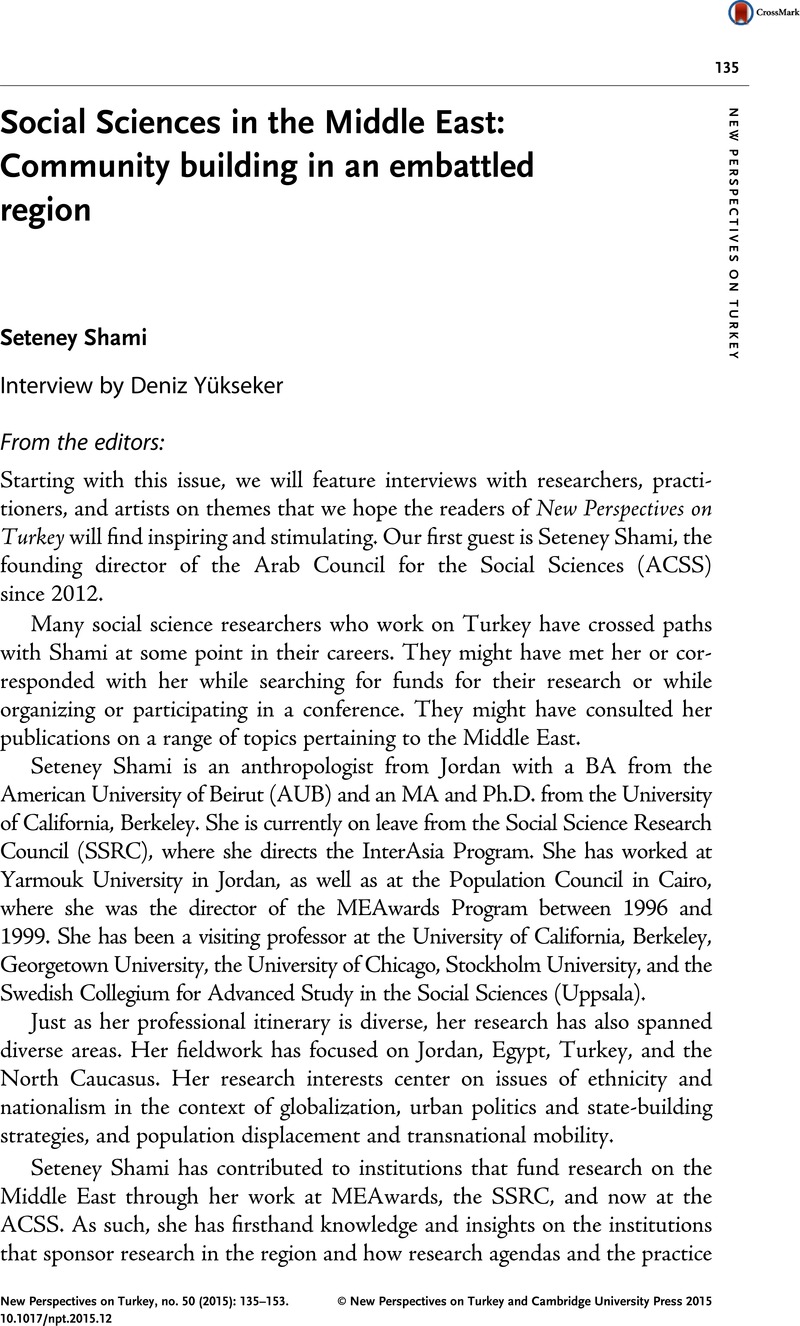No CrossRef data available.
Article contents
Social Sciences in the Middle East: Community building in an embattled region
Published online by Cambridge University Press: 11 June 2015
Abstract

- Type
- Articles
- Information
- Copyright
- © New Perspectives on Turkey and Cambridge University Press 2015
References
1 Shami, Seteney, “Studying Your Own: The Complexities of a Shared Culture,” in Studying Your Own: Arab Women in the Field, eds. Soraya Altorki and Camillia El-Solh (Syracuse: Syracuse University Press, 1988), 115–138Google Scholar; Arabic translation published as Fi Watani Abhath: Al-Mar’a al-‘Arabiyya fi Maydan al-Buhuth al-Ijtima‘iyah (Beirut: Center for Arab Unity Studies, 1993).
2 General İsmail Berkok, Tarihte Kafkasya (İstanbul: İstanbul Matbaası, 1958).
3 She is referring to the more than 70 left-leaning university professors who were fired under Martial Law No. 1402 in 1983, in the wake of the 1980 military coup.
4 Population Displacement and Resettlement: Development and Conflict in the Middle East (New York: Center for Migration Studies, 1994).
5 Seteney Shami and Cynthia Miller-Idriss, eds., Middle East Studies for the New Millennium: Infrastructures of Knowledge (under contract with NYU Press).
6 Bayat, Asef, “Areas and Ideas,” Comparative Studies of South Asia, Africa and the Middle East 33, no. 3 (2013): 260–263CrossRefGoogle Scholar.
7 The InterAsia program initiated by the SSRC in 2008 “challenges the implications and limitations of the Asia construct by promoting frameworks and concepts for a new generation of scholarship that reconceptualizes Asia as a dynamic and interconnected formation spanning Central Asia, East Asia, South Asia, Southeast Asia, the Middle East (including Turkey), and Russia.” Four conferences were so far organized under the rubric of InterAsian Connections in Dubai, Singapore, Hong Kong, and İstanbul. For more information on the program, see http://www.ssrc.org/programs/interasia-program/.
8 Appadurai, Arjun, “Theory in Anthropology: Center and Periphery,” Comparative Studies in Society and History 28, no. 2 (1986): 356–361CrossRefGoogle Scholar.
9 Burawoy, Michael, “Conclusion: Provincializing the Social Sciences,” in The Politics of Method in the Human Sciences: Positivism and its Epistemological Others, ed. George Steinmetz (Durham: Duke University Press, 2005): 508–525CrossRefGoogle Scholar.




